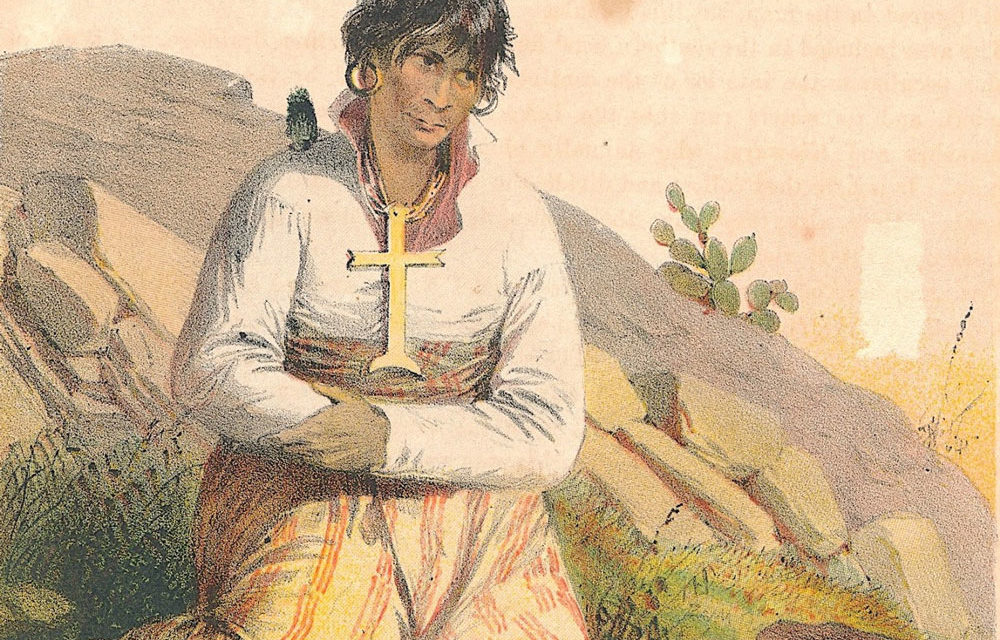South Texas, a U.S.-Mexico borderland region extending for nearly 300 miles along the Rio Grande, has one of the most profound concentrations of Mexican Americans in America. In nearly every one of its communities extending from the Rio Grande River to the Nueces River 50 miles north, Mexican Americans represent more than 90% of the population. Many of these communities are over 200 years old, several, including Laredo, were founded 250 years ago.
In my historical research of this region I recently discovered that the Sáenz branch of my family came with the original colonists that settled the region in 1750. I am not alone in claiming historical links to the early Spanish settlers, but in researching their history, I was unaware of the significance of these settlements to the future economy of Texas. Western historian Sandra L. Myres concluded that these settlers founded “a ranching frontier which was to become the ‘cradle of the Western cattle business’.”
The Spanish-Mexican communities of South Texas, extending today from Matamoros-Brownsville to Laredo-Nuevo Laredo along the Rio Grande, have their origins in the mid 1700s. The intrepid colonizer, Jose de Escandon, the Conde de Sierra Gorda, received a Spanish Crown commission in 1746 to settle the region. He recruited some 6,000 farmers and ranchers and their families from the northern provinces of Mexico, a region then referred to as the Seno Mexicano. The Seno Mexicano, a sparsely populated province of Mexico, extended from the Panuco River in Tampico to the headwaters of the San Antonio River.
Under Escandon the new colony was called Nuevo Santander and included the towns of Camargo, Reynosa, Revilla [Guerrero], and Mier on the south bank and Laredo and Rancho de Dolores on the north bank. In 1757, less than five years after the founding of new towns in Nuevo Sandander, official Spanish inspectors reported more than 80,000 heads of cattle, horses and mules and 300,000 sheep and goats in the region.
While teaching Texas history in Austin to 7th graders years ago, I encountered the chapter on Stephen F. Austin, “Father of Texas,” who brought 300 colonists to Texas in the late 1820s and early 1830s. What was missing was the contribution of Mexican settlers.
Texas Historian Donald E. Chipman is exemplary in recognizing the achievements of Escandon. Escandon, he wrote, “helped relocate more than six thousand Spaniards and congregate nearly three thousand Indians, and he helped lay the foundation of the cattle industry in the lower Rio Grande Valley.” [Chipman, Spanish Texas]
By 1800, thousands of cattle roamed the plains of Texas and wild horses were plentiful. Most of us who taught history years ago, and even Texas school teachers today, had never heard of Escandon and few knew that he had been responsible for the first great migration to Texas and surrounding Mexican communities.
The Mexican province of Queretaro was Escandon’s home base, and from there he recruited three thousand colonists. Among Escandon’s colonization recruits from the Northern provinces of Cerralvo and Camagro were three Sáenz brothers, Juan Angel, Jose Miguel, and Jose Geronimo, descendants of my 10th generation great grandfather, Miguel Sánchez Sáenz.
I used numerous historical and genealogical sources to determine when and how the Sáenz family, my ancestors, arrived in South Texas. I was helped by the research done by Joel Rene Escobar y Sáenz in his book, Family History of Capt. Miguel Sánchez Sáenzand His Descendants, printed in 2002 by Munguia Printers of San Antonio. I grew up two blocks from Munguia Printers and visited often but only recently became aware of this book’s existence. Mr. Escobar y Sáenz provided valuable information on research by Ramon Barrera regarding the founding of Roma-Los Sáenz.
Barrera, a native of Los Sáenz, has written an excellent history of the settlement of Roma-Los Sáenz, as the area was originally known. Barrera writes that the Sáenz colonists came from Mier, one of towns founded by Escandon on the Rio Grande River. Mier was founded in 1752 and was adjacent to Roma. The Sáenz brothers established residence in the Roma area in the mid 1750s. In 1767 these three brothers were granted Porciones by the “General Vista of 1767.” Their ranches, Porcion 72, 73, and 74, were between the towns of Roma and Los Sáenz.
According to Barrera’s research and the Roma Bicentennial Committee, the “Villa de Los Sáenz” was founded in 1763, prior to the land distribution. The founding of Roma-Los Sáenz is confirmed by Jerry Thompson’s excellent narrative, A Wild and Vivid Land: An Illustrated History of the South Texas Border. Thompson discovered that “During the Colonial Era, what is today Roma was claimed as porciones seventy-one and seventy-two under the jurisdiction of Mier. In these porciones, two ranches, Rancho de Los Sáenz and Rancho de Buena Vista, were established with families from Mier around 1760.”
On May 13, 2021, I will be a moderator for a presentation at the Witte Museum by historian Armando Alonso of the life and achievements of colonizer Jose de Escandon. This invitation reminds me that history has many deep secrets and rich details we know little about. We do not always have all the facts about crucial events and important individuals. Escandon’s contribution to Texas history is significant and has long been overlooked. Escandon’s exclusion from many Texas secondary textbooks is a slight that needs to be remedied.
My Mestizo Family Crossed the Rio Grande: 1752









